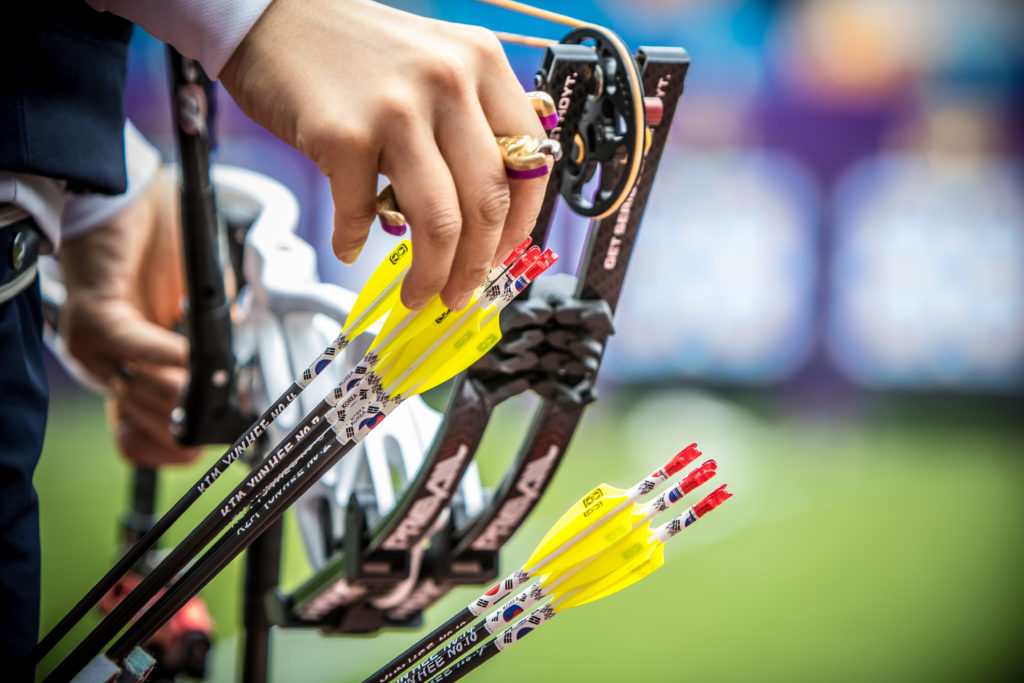
What happens to all your old archery gear? Bow has a think
Sustainability is a long-term issue that affects all of us. Products that are described as ‘sustainable’ are those that provide benefits while protecting the public health and environment over their whole life cycle, from the extraction of raw materials until a final disposal. That doesn’t, unfortunately, describe most archery gear.
No-one is going to blame a sport like archery for destroying the planet; there aren’t that many of us and the problems the human race collectively faces in the future will need to be tackled at a much higher level.
However, as we all know, archery involves a large amount of equipment and consumables and most archers own many hundreds of individual items directly related to the sport. Reducing waste and landfill is always a good idea and we can all do our bit.
Unless you are a dedicated longbow shooter, part of the problem is that much modern archery equipment is made from specialist composites which are not always easily recycled back into useful and reusable materials. And serious shooters get through a lot of consumables too (see below).
As a result, not all archery gear is usually directly recycled in the conventional sense – the recycling that does occur tends to be more conceptual; as archery gear tends to be ‘marked down’ from tournament sets to practice sets, to spares at the back of the cupboard or the have-a-go box at the club.
Andreas Lorenz of Beiter, the archery manufacturer based in Germany, has a very personal passion about waste and recycling. “I am constantly amazed at the amount of plastic wasted and thrown away. It’s not so much the question of whether we should use plastic so much as how we use it and how we should use it again,” he said.
“At Beiter, for example, we use the best plastic, the first granulation for the nocks, as that has to be the very best quality. The runner [offcuts] from that, we re-use to make the target pins and the armguards and so on.
“It’s still a very high quality plastic, and it’s not been wasted. The offcuts from making armguards, are, funnily enough, much smaller than the offcuts from making nocks. We are always trying to reduce the waste.”
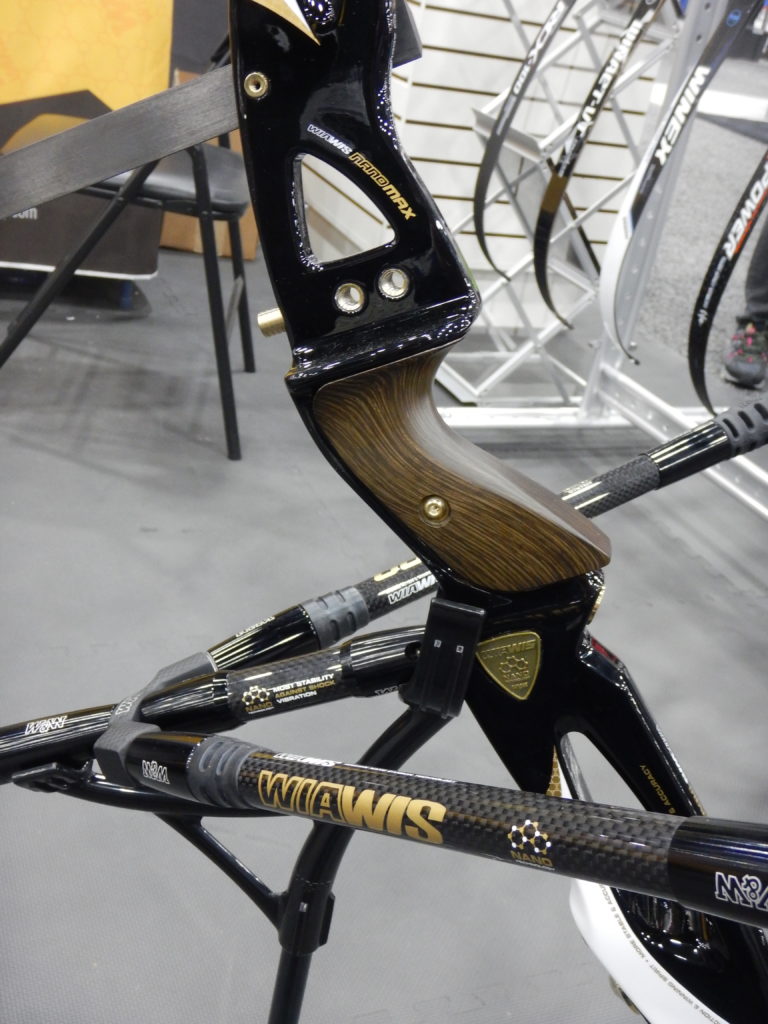
“We also work with steel and aluminium, which are easy to recycle. Carbon is a bigger question. I would be interested to see what archery manufacturers who work with carbon have to say about recycling.”
The expensive carbon fibre used in archery gear can occasionally be recycled in specialist centres, but they tend to focus more on the waste from vehicle manufacturing, and not on the relatively tiny amounts of carbon in archery gear.
One aspect of archery is a good example of sustainability: target bosses. Layered foam bosses use offcuts from other plastics manufacturing processes in their production, and straw bosses are made out of a sustainable material that often otherwise just gets burned.
What gets used – and what gets thrown away
A major international tournament might feature nearly three hundred archers, most of which will shoot somewhere between 50,000 and 100,000 arrows a year – collectively racking up perhaps 15 million arrows shot every year.
With numbers like that, the field is going to get through a lot of equipment. This year, at the Antalya World Cup, Bow decided to take a look at the primary consumables that an elite team gets through.
Vanes
Vanes (or fletchings) are one of the biggest consumables in terms of volume, and elite archers go through many hundreds every year. We’ve heard of one Olympic medallist from a major archery nation who apparently likes to re-fletch all his arrows every night at a tournament.
“For recurves, I’d expect you to put all new spin wings on the night before a competition.” said Jon Nott, UK coach. “For compounds, If they’ve got a mark or a line: new vane. Having said that, the longer they’ve been on the happier I am. I hate to start when one of the girls has got new vanes that are literally only on a few days because for me, they haven’t passed the secure test yet.”
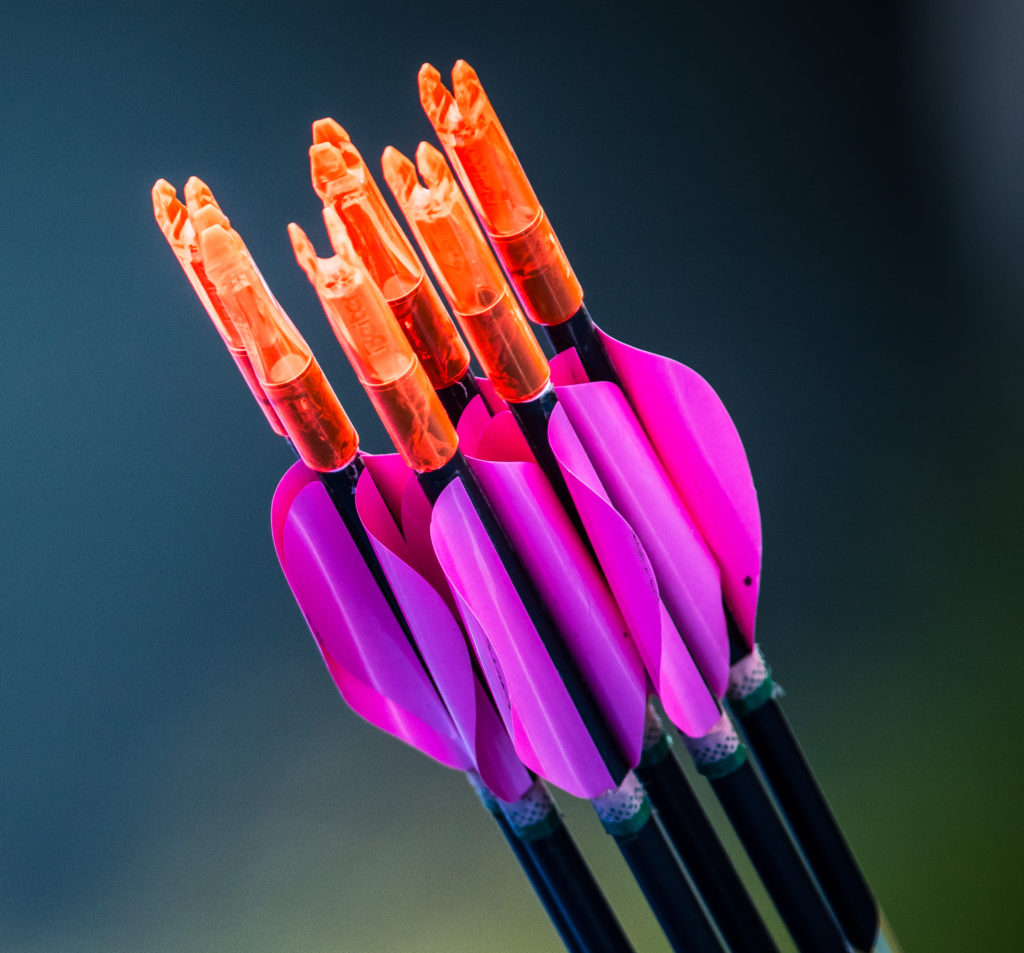
Most top level archers use a separate set of arrows for tournaments and practice. Oliver Hahn, head coach of Germany, suggests this: “It’s a good idea to change the vanes before every competition, but if you have a set of competition arrows you might not have to change all of them – maybe just a few of them each time. Don’t think about the vanes too much. They have to be the best, but you only need to change them when absolutely necessary.”
Vanes are frequently just thrown away. The amount of plastic involved is a drop in the ocean compared to the grander global issues around plastics, but if you can recycle them, do.
Nocks
Most elite archers will be changing nocks immediately before a major competition, and top archers will go through dozens. “You’ll need a minimum of 100 nocks for every season, ” says Oliver Hahn. “And always, always change them before a tournament.”
The USA team like to change their nocks just before official practice so that they are worn in. Coach Mel Nichols says: “We go all over with brand new ones, and we’ll shoot that for this tournament, and then we’ll train with them until we get ready for the next tournament, and then do the same thing.”
Nichols also recommends using different colour sets of nocks for practice and tournament arrows, in order to keep it clear exactly what’s what. There’s not a great deal you can do with old nocks, although some have suggested using them for archery art projects of some kind.
Arrows
Arrows can wear in all kind of ways: both easy to spot and almost imperceptible.
All coaches were keen to stress that a set of arrows should be kept for competition, and when they get tired, demoted for practice. “You should have a competition set and a practice set. And some people have a competition set and an important competition set and then practice arrows. Never sell or get rid of old arrows, always just use them for practice.”
“If you look at the arrows that Alexis Ruiz is shooting this weekend, she was all the way up to number 72. So that’s six dozen arrows there we’ve had to deal for this year,” said coach Nichols. “We go through a lot just to make sure, you know, sometimes out of the blue you’ll start getting one that just takes off after it gets shot in.”
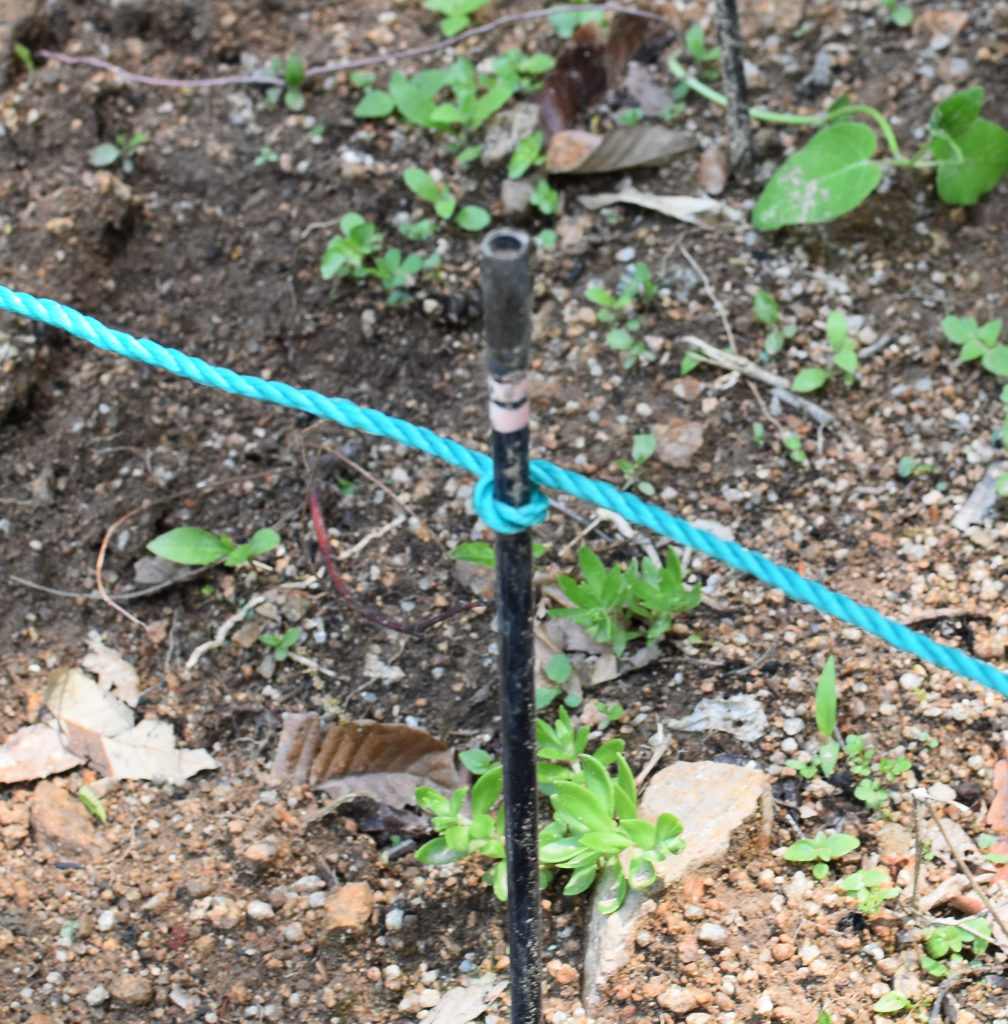
“Arrows are really important to watch because it could cost you points. You could be breaking the best shots possible, but if you have a bad arrow, it’s going to frustrate you more. You might as well just get rid of it.”
Jon Nott: “The amount of times I’ve seen someone with an old set of arrows with a brand new bow. You’d have been better off with that older bow and a brand new set of arrows.”
Some pros even keep a particularly ragged set solely for blank bale shooting. Mel Nichols: “Especially recurves that are shooting a blank bale at three or four metres. Those arrows are coming to such an abrupt stop really quick that’s there’s a lot of extra stresses there. You should be shooting ‘dead’ arrows at a blank bale.”
When arrows really do finally reach the end of their life they can be used as garden stakes, turned into pens, used as yardage markers on the range, or used for kite-making or a range of other creative / craft projects. All-aluminium arrows can of course be simply recycled as metal.
Strings
Most recurve club archers might keep one or two strings set up and shot in. At the elite level, where strings are a key part of the very fine tuning that goes on, you’ll need rather more than that.
Oliver Hahn, head coach of Germany, says: “I think in one season each archer might need eight strings. Normally in competition we’ll have set up extra strings. As you test them you might see the groups for one or the other is much better. So I would say: each archers might need four strings for competition and perhaps another three or four for training.
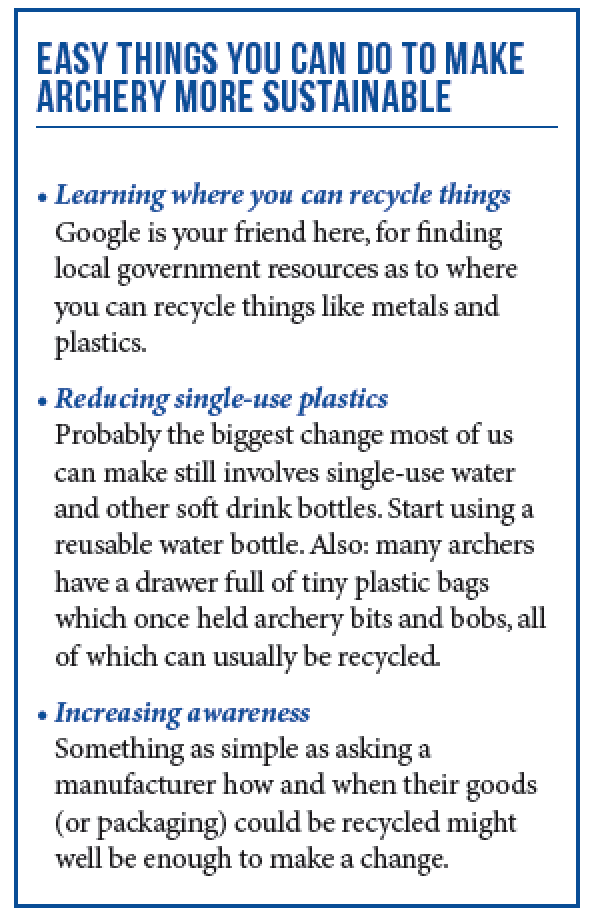
How long modern compound strings can last and keep performing varies a great deal. “I’ve heard 10,000 shots.” said Jon Nott. “Which for my athletes, can be three months. They have a life, but when they start looking tired, and not at their best, it’s probably time for a change.”
Mel Nichols thinks longer. “At this top level, we’re changing ours after about, usually between the half year, we’re starting to look at them and see how they’re doing, what the strings are doing. We go through about two sets a year.”
“The strings are still so good nowadays, we don’t have to, but we’d rather be on the safe side more than anything at this level, because we travel around the world, you can’t afford to have to take the string to the end of its life,” he said.

“But, once a string gets shot in there, I like to keep shooting it and not worry about it. This red, white, and blue one that Alexis [Ruiz] is shooting here, she’s been shooting it for a whole year. Sometimes, it’s easy to blame a string.”
Many archers (especially recurves) have a bunch of old, dead strings lying around. When strings reach the end of their life, they are excellent for creative projects or perhaps a job in the garden that requires something permanently tied above ground.
Conclusion
In the modern world, companies are often forced to think about recycling through legislation or official initiatives. But the consumer always bears some responsibility.
It’s down to every person on the line to ensure these archery consumables don’t end up as useless waste. We should all try and find a way for this gear to end up at conventional recycling centres, where possible, or at least renewed and reused in a second life.
A version of this article originally appeared on the World Archery website.


Great article.
Besides Beiter, are there any specific initiatives or companies trying to improve sustainability in archery?
I love the view and realization around recycling and Archery. I have some recycling ideas that could help widen the lower end of the archery market while recycling.